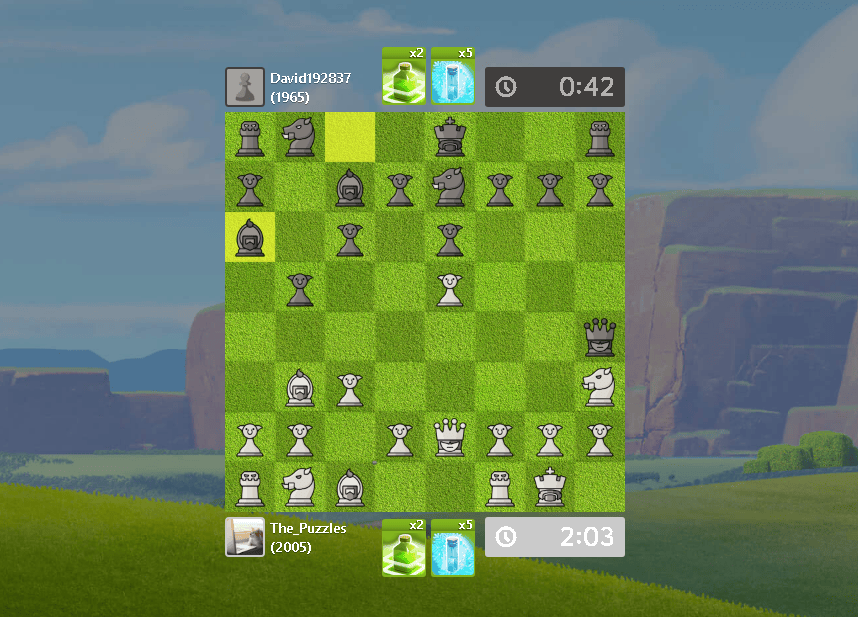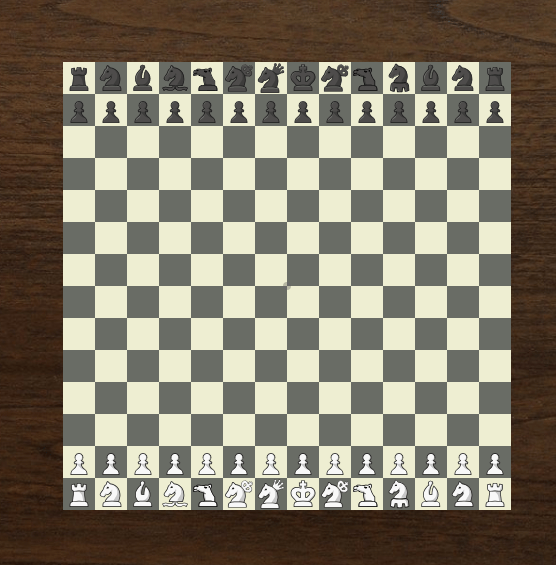
Quick Guide to Spell Chess
Spell Chess is an imaginatively crafted variant. It's the best one in the /variants part of Chess.com. Sort of close to chess, and also unique. All of the standard rules apply, but each player has 5 freeze spells and 2 jump spells, and these spells make game (especially the opening) highly cutthroat and tactical. The freeze spell freezes everything within a 3x3 section of the board, including one's own pieces. But players may move through the 3x3 section, or capture things inside the 3x3 section. Players can only use one spell per turn, and it takes a cooldown period of three full moves before a player can use the same spell again. But players may use the two different spells on consecutive moves. The jump spell allows Bishops, Rooks, and Queens to jump over one enemy or allied piece. (Pawns may also exploit this rule by jumping over a piece from the second to the fourth ranks but it's quite rare that this happens). This completely changes the openings. Most of Black's openings lose by force, because White can aim for Bb5 and Qh5, threatening to jump at either d7 or f7, and also freezing Black's pieces. In response to 1.e4 by White, Black has 1...Nc6, 1...c6, 1...e6, or 1...e5. Some strong players have told me that the last two options are barely not losing by force. My very first game of Spell Chess, played before I had properly understood the rules, went like this. (You will need to visualize a little here.)
You can capture the King in this variant, as well as delivering checkmate in the usual way. Black did not have to lose so easily. It was possible for Black to play jump@h7 and Rxh5. Black would take the White Queen, and White would be forced to capture the Black rook with their own Rook, leading to this position.
White could have been craftier than this. White could have played 2.Qh5 and freeze@g7, which would prevent the Black Rook from taking the Queen, and keep the threat of jump@f7 on. But even freezing at g7 is not good for White.

I wonder why they didn't just write to Freeling and ask him if they could host Grand Chess on chess.com. And why not ask Daniel MacDonald about his Omega Chess? Or Jean-Louis Cazaux if they could host his Shako variant? Or David Paulowich if they could host TenCubed Chess. These are all excellently designed and fun to play large board variants. (Whether or not chess.com requires the permission of the designer is something I'm not sure of. Due to the patent laws in the U.S., I suspect they do require permission.) But if it is not feasible to get one of these variants, it's still not clear why this variant exists.

XXL Chess--quite something. And the pawns always promote to Queens on the 8th rank, which skews the game into a race to promote. Large board variants should not be unwieldly or intimidating. They should be slightly larger than Chess, but elegant like Chess. I'm genuinely lost as to why there is such creativity and care in Spell Chess, and at the same time there is XXL Chess. As a fan of large board variants, XXL is a real disappointment, because it is likely to reinforce the prejudice that 8x8 chess is perfect and anything larger is just too much. The /variants part of Chess.com is obviously an experimental part of the website, but it would be so easy to have 10x10 variants which are as fun as Spell Chess.
I'd like to see Spell Chess 2, with more spells, or perhaps on a larger board. Spell Chess has had me hooked. I spent a few weeks grinding to break a 2000 rating, and it was a blast.
As a final note, if you are playing Spell Chess, take care about time. When I play, there is no sound, and no red clock, to let you know that you are getting low. People flag fairly frequently because the usual alerts one gets are missing.
Let me know your thoughts, if you like.